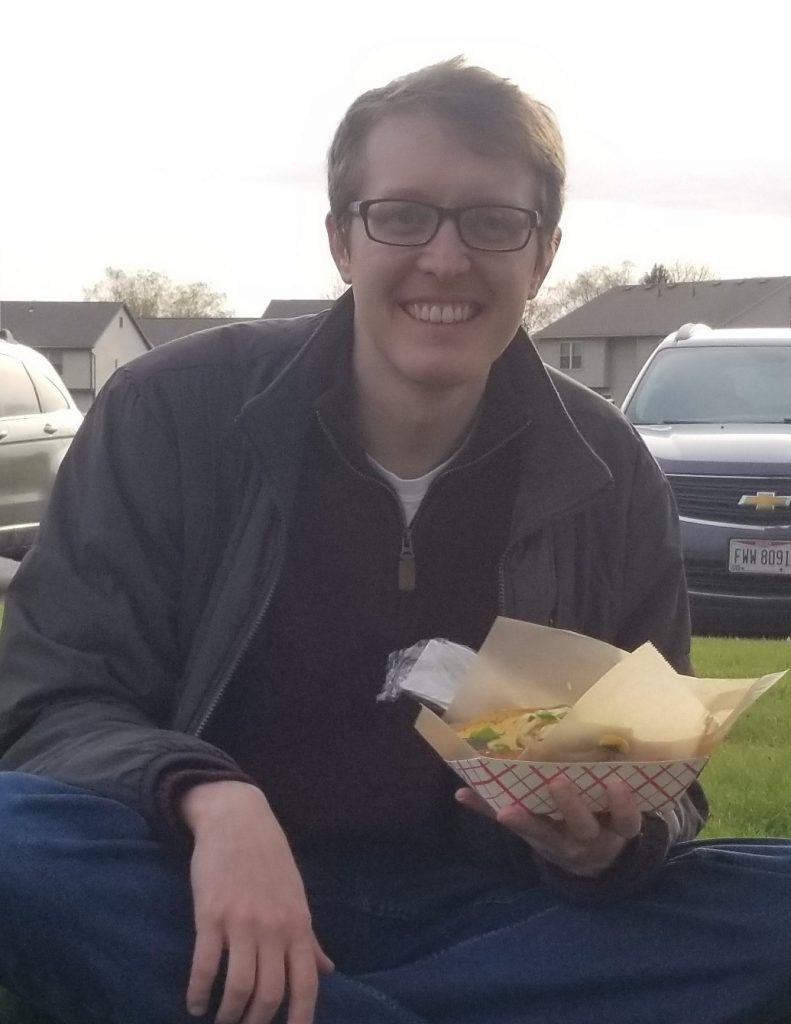Five Cardinal Questions with Assistant Professor Kirk Kayser, Mathematics and Actuarial Science
Posted Aug 15, 2022

Assistant Professor Kirk Kayser joined the Department of Mathematics and Actuarial Science at Otterbein in 2018. He came to Otterbein from Arizona State University, where he earned his Ph.D. in applied mathematics and won two awards for his excellence in teaching.
Kayser is already making his mark at Otterbein — he co-authored a Choose Ohio First Grant of $1,259,937 to support students from Ohio entering Otterbein’s math and nursing programs, with a focus on underrepresented groups in these fields.
Beyond the classroom, Kayser teaches game theory at Johns Hopkins Center for Talented Youth, a residential summer program for gifted middle-school students. He also enjoys spending time with his wife and two adorable daughters and is active in his faith.
Let’s learn more about Assistant Professor Kirk Kayser!
Q: How would you describe your teaching style?
A: My teaching style is a bit Socratic. I’ve described it in the past using the acronym MITE: Motivation; Investigation; Theorization; Exploration. I always want to properly motivate the content I am going to teach, and I think about this as digging out space in their minds or building their appetite and desire for what they will learn. Then, through discussion or experimentation, I want students to actively try to solve problems before being given the solution method. Can they discover productive approaches or understandings for themselves, maybe with a bit of gentle guidance? Once a productive method is discovered, we should rigorously develop this theory, formally stating the steps in the method or the theorem and proof. Finally, exploration. Let’s look at other examples and practice implementing this new understanding. For how many different situations can this knowledge be useful?
In the classroom, I like to think of myself as precise in wording and intentions, yet animated and humorous when it’s called for. On Rate My Professors, a student said I am “ridiculously funny” and I’m proud of that. I also know that throughout the semester, sitting in the same chairs and having similar discussions will get tedious and boring. So, I try to change things up and introduce new interactions and approaches throughout the semester. I feel best when I leave my office with a large bowl full of paper fish (for studying sampling distributions in statistics) and a shelf from my bookshelf (for studying related rates and the sliding ladder problem in calculus). The students going “fishing” for samples is valuable for interactively discovering that sample mean is a random variable, and for learning to differentiate between samples and a population. Similarly, seeing the sliding “ladder” frozen at different moments and asking questions about how fast the base is sliding relative to the top harnesses their intuition and helps them invest in what they are learning.
Q: What do you hope your students take from your classes?
A: I hope my students feel empowered to observe real-world phenomena, utilize mathematical structures to model and analyze those phenomena, and thus contribute new and useful insights back into the original context.
Q: Why are you passionate about the subjects you teach?
A: I’m passionate about the subjects I teach because of the pairing of intellectual creativity and rigor with practical utility.
Q: What is your favorite class to teach?
A: My favorite class to teach may be game theory. Without many prerequisites, students can see the power of mathematical modeling to analyze social, economic, evolutionary, and more interactions, and use mathematics to rigorously prescribe optimal decision-making in those moments of conflict and/or cooperation.
Q: What is one lesson you want students to carry with them not related to the subject matter?
A: As I mentioned, I want students to feel empowered to use mathematics to understand and improve their world. More generally, coursework is not a series of obstacles used to measure the resilience of students. Each class is an opportunity to learn something new, interesting, and useful, and though it may be cliche, that knowledge is powerful.
I also hope to pass on some life wisdom or insights with my students throughout a semester. I even hope that doing my job with effort, kindness, and integrity sets a good example for them and inspires them to engage in their work and interactions in a similar way.